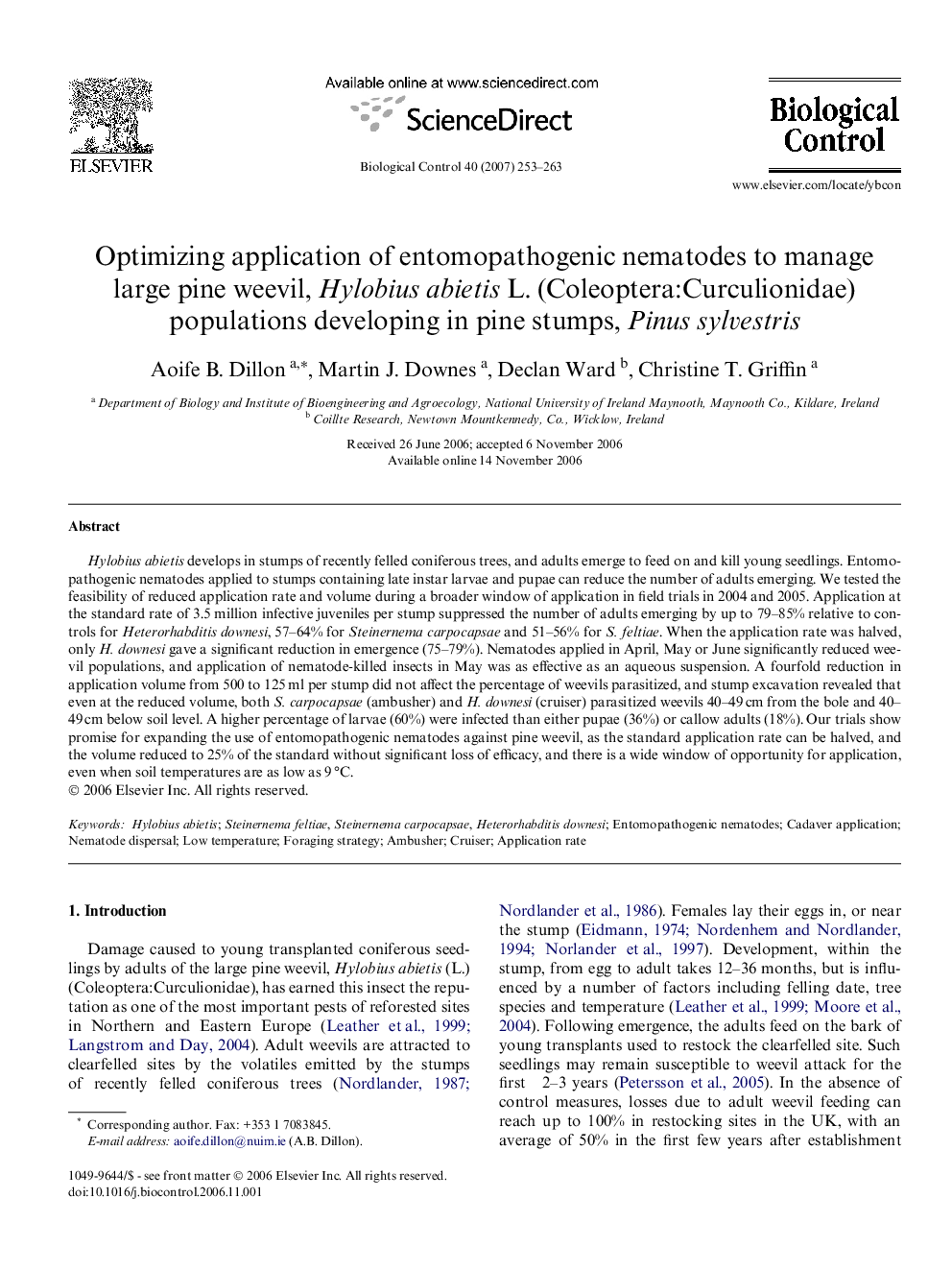| کد مقاله | کد نشریه | سال انتشار | مقاله انگلیسی | نسخه تمام متن |
|---|---|---|---|---|
| 4505221 | 1321133 | 2007 | 11 صفحه PDF | دانلود رایگان |

Hylobius abietis develops in stumps of recently felled coniferous trees, and adults emerge to feed on and kill young seedlings. Entomopathogenic nematodes applied to stumps containing late instar larvae and pupae can reduce the number of adults emerging. We tested the feasibility of reduced application rate and volume during a broader window of application in field trials in 2004 and 2005. Application at the standard rate of 3.5 million infective juveniles per stump suppressed the number of adults emerging by up to 79–85% relative to controls for Heterorhabditis downesi, 57–64% for Steinernema carpocapsae and 51–56% for S. feltiae. When the application rate was halved, only H. downesi gave a significant reduction in emergence (75–79%). Nematodes applied in April, May or June significantly reduced weevil populations, and application of nematode-killed insects in May was as effective as an aqueous suspension. A fourfold reduction in application volume from 500 to 125 ml per stump did not affect the percentage of weevils parasitized, and stump excavation revealed that even at the reduced volume, both S. carpocapsae (ambusher) and H. downesi (cruiser) parasitized weevils 40–49 cm from the bole and 40–49 cm below soil level. A higher percentage of larvae (60%) were infected than either pupae (36%) or callow adults (18%). Our trials show promise for expanding the use of entomopathogenic nematodes against pine weevil, as the standard application rate can be halved, and the volume reduced to 25% of the standard without significant loss of efficacy, and there is a wide window of opportunity for application, even when soil temperatures are as low as 9 °C.
Journal: Biological Control - Volume 40, Issue 2, February 2007, Pages 253–263